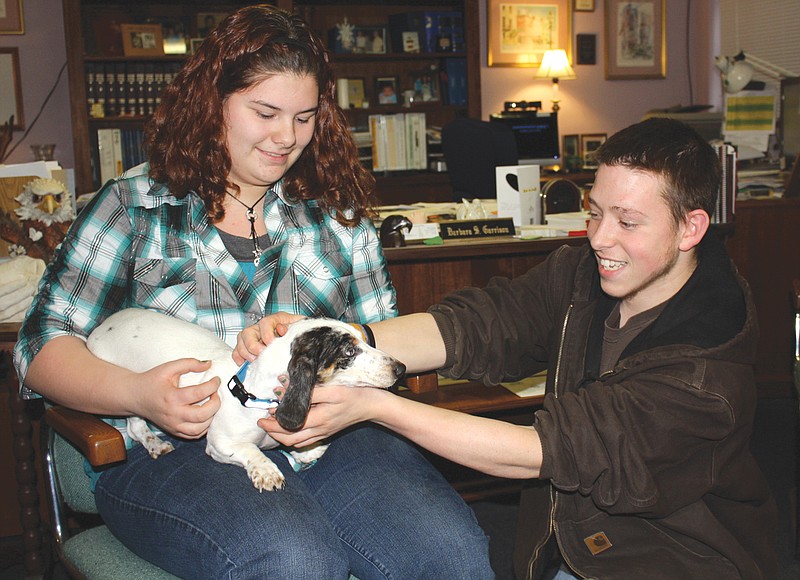Sparky is a 1-year-old, brindle-colored dachshund who is full of energy and spunk. He is also deaf, a characteristic that made him useless to the dog breeder and then difficult to adopt at the shelter he was sent to. But Sparky recently was given a second chance.
The animal rescue shelter where Sparky resided brought him to South Central Correctional Center in Licking. The prison participates in Puppies for Parole, a program that pairs rescued dogs with inmates in the State of Missouri Department of Corrections system for training, in order to make the canines more adoptable.
After eight-weeks of training at SCCC, the prisoners decided they wanted Sparky to find a home at a school for the deaf so he could help others. When Barbara Garrison, superintendent at the Missouri School for the Deaf, was contacted about adopting the dachshund, she said, "Bring him on! We will take him."
Garrison drove out to SCCC to pick up the dachshund the inmates had named Zeus. She said when she first brought the dog over to the school, he was bouncing all around with such energy "like a spark plug" that "it was natural that his name needed to be Sparky." She added that Zeus was also more difficult to pronounce.
After spending about six weeks getting used to his new surroundings, Sparky spent MSD's homecoming weekend, Jan. 21-23, in the student dorms. Sophomore Catherine Slinkard of Sullivan asked to keep Sparky overnight first, so he stayed in her dorm one night.
"He was very calm when I had him," Slinkard said.
Then Sparky went over to Michael Miller's dorm. The senior from Cuba admits that he fell in love with the little dog. Miller learned quickly that yelling at Sparky did no good. He had to either use sign language or pick the dog up to get his attention. Miller knew Sparky could hear nothing, just like him.
"I feel that because I can communicate with him in signs that it's special," he said.
Garrison interpreted for Slinkard and Miller. She said Sparky has become a part of the community at MSD just like any other student.
"He fits perfectly here," Garrison said, "because these kids hear all the time what they can't do. We try to tell them what they can do."
She said it's been the same for the deaf dachshund. The inmates taught him a some sign language, and now the students are trying to continue his training. Sparky knows the signs for "no," "sit," "lay down," "stay," "stop" and "heel." Slinkard said she's been working with him on "outside" and "food."
The inmates at SCCC who taught Sparky met with deaf offenders to learn some sign language to help train the dog. George Lombardi, director of Missouri DOC, said certified dog trainers come to the correctional centers to teach the offenders in the Puppies for Parole program how to train the dogs. He said there are currently 12 prisons around Missouri that take part in Puppies for Parole and the program is growing. Lombardi initiated the program at the Jefferson City Correctional Center in February 2010. He said his goal for the program was "to make the atmosphere of the prison a little bit safer, and it really has done that."
He said not only has the program had a positive impact on the inmates and prison staff, but it has saved many dogs from being euthanized.
The shelters choose which dogs to bring to the offenders.
"Usually they are dogs that are having a difficult time being adopted out," Lombardi said.
The DOC estimates that approximately 150 dogs have been adopted since the start of Puppies for Parole and about 75 are currently in training. Lombardi said the program is run completely from donations; no tax money is used. The donations come from the offenders, prison staff, food companies and others.
"There's a lot of dog lovers out there," he said.
Garrison said she receives a weekly call from SCCC staff, checking to see how Sparky is doing. He usually stays at Garrison's house at night where she keeps four other dachshunds. During the day, he may be seen around campus. Sometimes Sparky can help calm a student with behavior or social problems down, Garrison explained. Not only can he be used as a therapy dog, but when students such as Slinkard and Miller have to take care of him overnight, Garrison said it teaches them responsibility.
"He likes his new deaf family here," she said.

